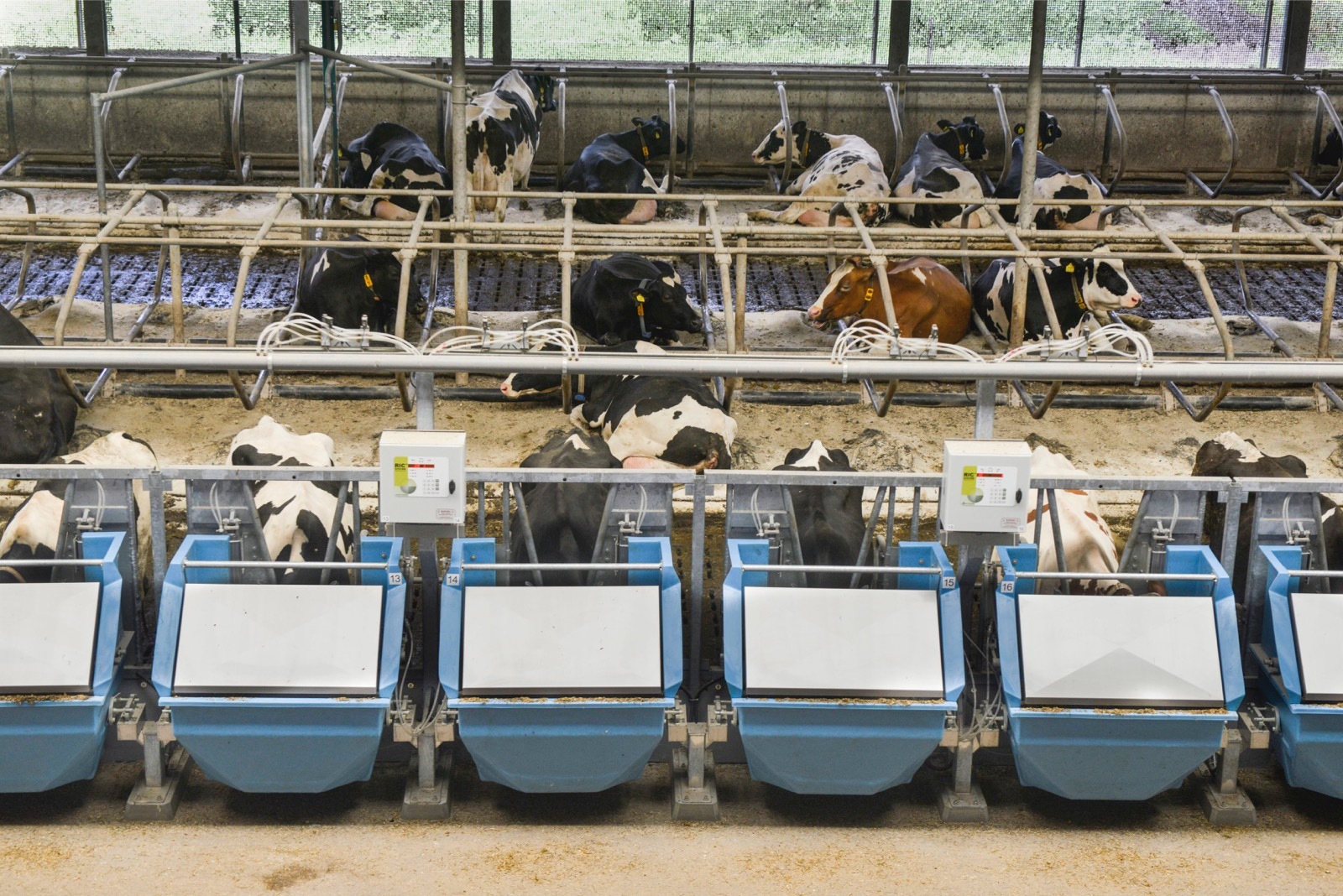In their analysis, the researchers investigated - among other aspects - the (genetic) relationship between feed efficiency and the feed intake capacity. Breeding for feed intake capacity reduces the feed efficiency, however breeding for feed efficiency traits also reduces the feed intake capacity. This might seem to be unfavourable, but it is not according to Professor Roel Veerkamp. ‘Cows with a reduced feed intake capacity are not a disadvantage as long as the feed they do eat is efficiently converted into milk production’, he states. ‘The additional feed intake of cows that eat a lot does not translate into higher milk production. In other words, they produce less efficiently, partly because they are heavier.’
Breeding for feed efficiency increases utilisation of roughage intake

A higher feed efficiency is directly linked to better roughage utilisation. This is the concision of researchers from the Animal Breeding and Genomics group at Wageningen Livestock Research based on analysis of a data set containing the feed intake, weight and milk production data of more than 3000 cows.
High intake, less efficient
Concentrate feed intake efficiency not hereditary
The researchers also focussed on whether breeding for feed efficiency results in cows that need a higher concentrate ration to achieve the same milk production. They concluded that cows with a high total feed efficiency also utilise the roughage component of their ration efficiently. The researchers did not find any genetic differences in concentrate feed intake efficiency. According to them - for practical purposes in the Netherlands and Flanders - there seems to be little advantage in distinguishing between roughage and concentrate intake efficiency.
A background article on the relationship between feed efficiency and roughage intake utilisation was included in the July issue of Veeteelt. Read the complete article (pdf).
